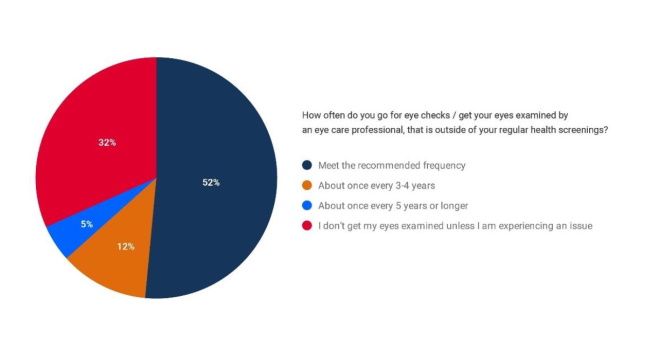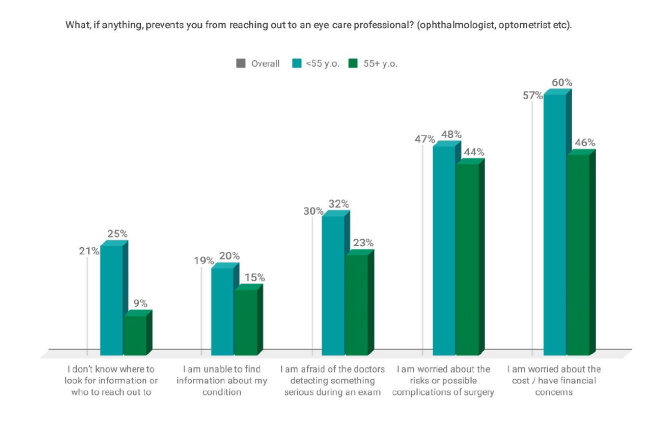
Health x Wellness
Singapore fares badly on eye health literacy
A Johnson & Johnson Vision study found only 52 percent of Singaporeans are meeting the recommended frequency of eye health check-ups.
According to the Centers for Disease Control and Prevention, personal health literacy is defined as the degree to which people have the ability to find, understand, and use information and services to inform health-related decisions and actions for themselves and others.
In Singapore, a recent Johnson & Johnson Vision study has found Singaporeans lacking in health literacy, specifically when it comes to eye health.
The study found that:
- About half of Singaporeans (52 percent) are meeting the recommended frequency one check-up every two years for those without pre-existing conditions.
- 12 percent get their eyes assessed once every three to four years.
- A significant 32 percent do not get their eyes examined at all unless they are experiencing vision impairment or issues.
- 58 percent would only consider reaching out for professional eye care assistance if they are experiencing moderate to severe vision impairment that is affecting their daily lives

Younger Singaporeans are more risk-averse and experience more psychological barriers when it comes to seeking help
The study compared the responses of younger Singaporeans aged 30 – 55 years old and older Singaporeans aged 56 years and older. It found:
- Younger Singaporeans are hesitant to go for eye health screenings as they are more afraid than the elderly of detecting a serious health issue in the screening (Young versus old: 32 percent versus 23 percent respectively)
- Younger Singaporeans are also more worried about the risks or possible complications of surgery compared to the elderly (Young versus old: 48 percent versus 44 percent)
- Younger Singaporeans are more worried about cost and have greater financial concerns compared to the elderly (Young versus old: 60 percent versus 46 percent)

Poor eye health and health literacy has a direct impact on cataracts
The study found for those aged 56 and above, close to 30 percent are not getting their eyes checked at all.
This group is the highest risk group for serious eye conditions that can lead to blindness, including cataracts and glaucoma.
In Singapore, nearly 80 per cent of the elderly are affected by cataracts. The number of people affected by cataracts also increases with age – it affects about 64 per cent of people between 60 and 64 years, and 95 per cent of people aged 75 years and older.
If Singaporeans – both patients and their caregivers – lack knowledge around the condition and available treatment options, then they might miss the opportunity to make the best decision for themselves. For example, many people are unaware that cataract surgery, depending on the type of Intraocular Lens chosen, can also correct presbyopia, or commonly referred to as “lao hua yan” (老花眼) and astigmatism (散光) in Chinese.
More importantly, if they are fearful or not proactive in getting their eye health screenings, and on top of that are dragging their feet when it comes to being treated, then there is a real risk that their quality of life, especially in their golden years, will be impacted.
Dr. Ronald Yeoh, ophthalmologist at Eye and Retina Surgeons
Survey results and visuals are attributed to Johnson & Johnson Vision
Photo by Mathilda Khoo on Unsplash









